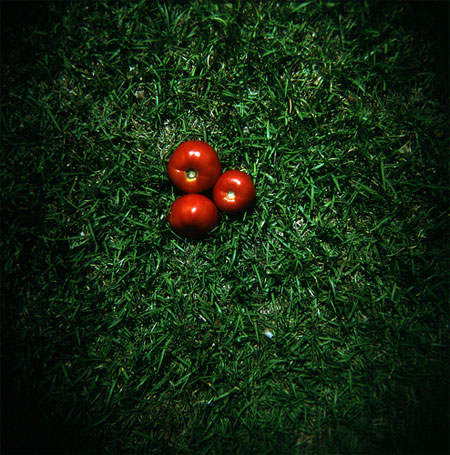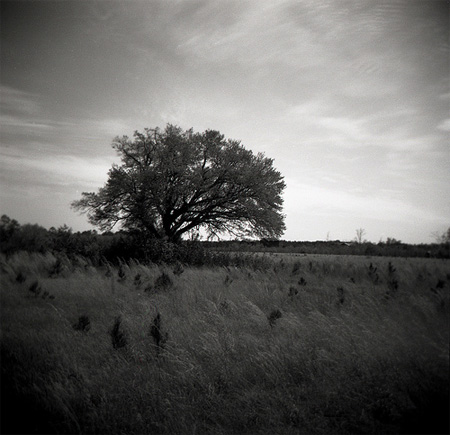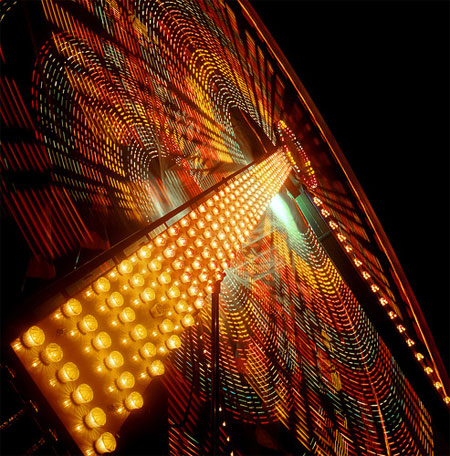120 film is a type of medium format film that was introduced in the beginning of the 20th century by Kodak. At the time, it was used all over the world by amateurs as well as professionals. Later on 120 film was gradually replaced by 35mm film as the most popular format.
Today digital cameras have taken over and film photographers are rare. But there is actually a small community still committed to the 120 film format. And according to me, this community is growing and 120 film is once again gaining more attention.
As an effect of the accelerating digitalization in the society, the retro trend has grown stronger during the last decade. Analog film photography has come back into fashion. Another important reason for the increasing popularity of 120 film is the great success of Lomography, an Austrian company specialized in selling re-productions of old cameras and analog photography equipment.
Characteristics of 120 Film
The first thing you will notice with 120 film is that it generates square shaped images, most often in the size of 6×6 centimeters. There is absolutely something special about a square format that gives your photos a notably harmonious feel. From one roll you normally obtain 12 images.
The major advantages of 120 film are that you get finer details and considerably less grain compared to the standard 35mm format. You will get photographs of much larger resolution, because the film surface is several times larger than the ordinary 35mm format.
Film Types
There are actually two different sorts of 120 film: the standard type which is negative film (also know as print film) and positive film (probably better known as slide film). Negative film can be color or black & white. Slide film is always color.
Two benefits of slide film are that you can obtain higher contrasts and reduced visible grain. If you choose to cross process slide film (develop the film as if it was a normal negative film), you will get very interesting images with high contrasts and over-saturated colors.
If you appreciate artistic and experimental photography and looking for a film that is something out of the ordinary, I have some tips for you. Try, for example, red scale film (produces results with warm shades of red), infrared film (beautiful black and white photos that captures infrared light), slide film (nice colors if cross processed), and high speed film (results in photos with plenty of old-fashioned grain).
Getting Started with Film Photography
Analog photography is fun and exciting so I suggest you get your hands on a medium format camera right away! It doesn’t have to be that expensive. There are various low-priced but cool lo-fi cameras available from Lomography, for example. The most well-known and popular are the Diana and the Holga cameras.
If you’re more experienced and serious about photography you’ll probably want to look for something more high quality. For instance a Mamiya or Hasselblad. Both are well known producers of high quality cameras. Check eBay and try to find a bargain!
About the Author
Learn more about what 120 films and cameras on Buy120Film.com.
Like This Article?
Don't Miss The Next One!
Join over 100,000 photographers of all experience levels who receive our free photography tips and articles to stay current:









I’m very much interested about 120 film format and want to use it once again. I love it and want to know It’s worth.
You are very right Antonio Vieira.
With a good quality scan offers now, I can scan all my negative or positive in digital and work on them on many available software.
A reborn of film on its way? Hmmm!
I shoot 120 film on my Sinar monorail view camera, my Speed Graphic Pacemaker, an my Mamiya RB67.
I get most of the versatility of large format and the economy of medium format. I shoot 6×7, and 6×9. I use the Graphlex 23 roll film adapter and the Mamiya rotating back.
I have gone back to film from digital.
Great article, makes me longing to try some analog photography… Grtz… :-)
“The first thing you will notice with 120 film is that it generates square shaped images, most often in the size of 6×6 centimeters”
120 film generates square images????? what about 6×4.5 format? and 6×7, 6×8, 6×9, 6×12, 6×17, 6×24 etc…
I bought a couple of 120 film cameras at the start of this year, and absolutely love them. The bigger negatives mean there’s a whole lot more to look at. I love having fewer shots per roll than 135 film- it makes shooting a whole roll not a huge task and I’m more likely to finish a roll in a weekend, rather than a couple of months for a 35mm roll. Both of my 120 cameras shoot 6×9 cm frames rather than square. I love the suspense and delayed gratification that film provides; it’s something rare in this technology saturated world. What’s more, with negative film, you don’t have to be bang on with your exposure settings. You can guess, based on the sunny 16 rule and it will turn out fine (although positive film is not so forgiving).